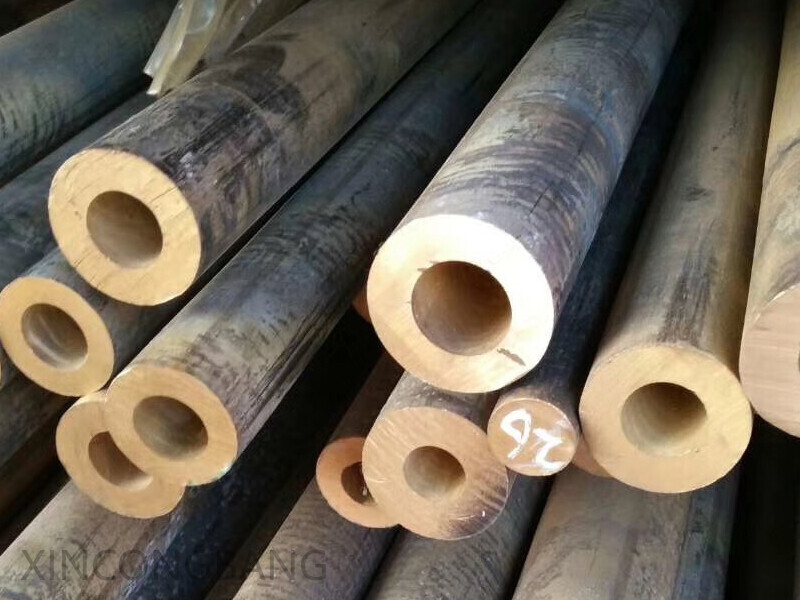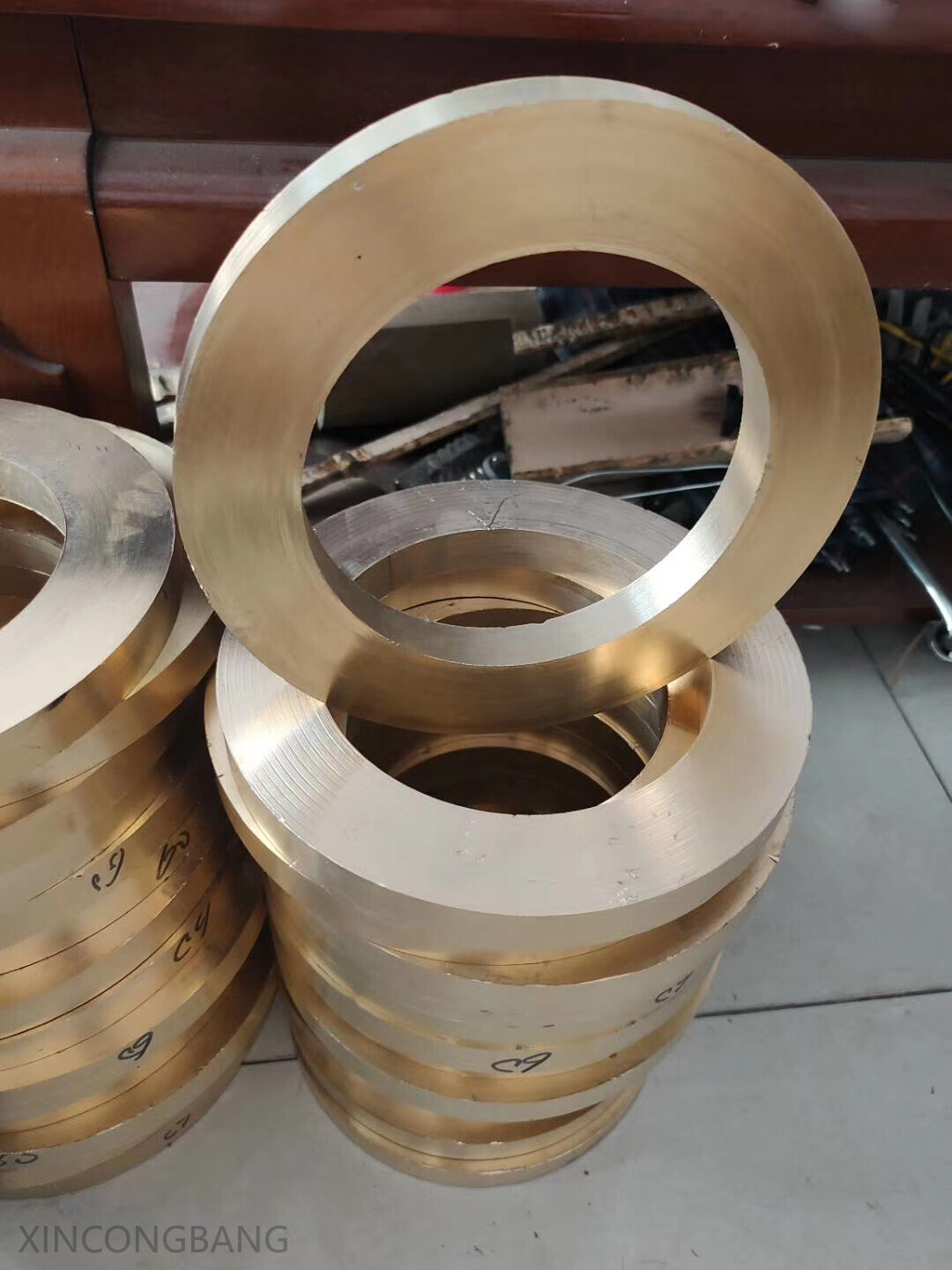Dimensional Specifications for C93700 Copper Tubes
C93700 copper tubes are available in welded and seamless forms, with standardized dimensional ranges:
- Welded Tubes: Outer Diameter (OD) 10–1,600 mm .
- Seamless Tubes: Outer Diameter (OD) 6–508 mm .
These dimensions align with industrial requirements for hydraulic systems, heat exchangers, and bearing sleeves, where precision and durability are critical. - ASTM B584-14: Primary U.S. standard for cast copper alloys, specifying composition and mechanical properties .
- EN 1982:2008 (CuPb10Sn10-C): European standard for leaded tin bronze, equivalent to C93700 .
- ISO 4383:1991 (CuPb10Sn10): International standard for bearing applications .
- JIS H5121 (CAC603C/LBC3C): Japanese standard for leaded bronze alloys .
- BS 1400 (LB2): British standard for high-lead bronze .
- DIN 17656 (2.1171): German standard for CuPb10Sn alloys .
- China GB 1176: ZCuPb10Sn10 .
France NF A53-707: CuSn10Pb10 .
International Standards for C93700 Copper Tubes
C93700 complies with the following global standards:
Additional regional equivalencies include:
C93700 copper tube production process
The production process of C93700 copper tube combines the traditional copper alloy processing process with special process optimization for its high lead and high tin content. The specific process is as follows:
1. Raw material preparation and smelting
Raw material selection: Electrolytic copper (purity ≥99.9%) is used as the base material, and tin (9%-11%), lead (7.5%-9.5%) and trace antimony, silicon, manganese and other elements are added in proportion to ensure that the alloy composition meets the ASTM B584 standard.
Smelting control: The raw materials are heated to about 1200℃ in an industrial frequency furnace, and electromagnetic stirring is used to ensure uniform distribution of alloy elements, and the smelting time is strictly controlled to reduce oxidation.
2. Casting and molding
Horizontal continuous casting: The molten metal is formed into a tube billet by a horizontal continuous casting machine, and a water cooling system (cooled to 50℃) is used for rapid solidification to refine the grain structure to improve subsequent processing performance.
Centrifugal casting (optional): For high-precision bearing components, a centrifugal casting process is used to use centrifugal force to form uniform tube wall thickness and dense structure.
3. Hot working and cold working
Planetary rolling: The tube billet is rolled using a three-roll or four-roll planetary rolling mill, and the outer diameter and wall thickness are significantly reduced. At the same time, the internal stress is reduced by controlling the rolling temperature (750-850℃).
Joint drawing and coil drawing: The rolled tube is drawn into a surface-hardened stretched tube through a triple-joint drawing device, and then enters the coil drawing machine for high-speed stretching, and finally forms a smooth copper tube of different specifications.
4. Heat treatment and surface treatment
Online annealing: Annealing treatment (temperature of about 600-700℃) is carried out in a protective atmosphere (such as nitrogen) to eliminate work hardening and restore material ductility.
Surface finishing: The oxide scale is removed by pickling, and mechanical polishing or plating (such as nickel plating, chrome plating) enhances corrosion resistance and surface finish. 5. Inspection and packaging
Non-destructive testing: Ultrasonic flaw detection and eddy current testing are used to ensure that the pipe has no internal defects.
Performance testing: Comprehensive testing of indicators such as tensile strength (≥220 MPa), hardness (HB 55-75), and elongation (≥15%).
Product advantages of C93700 copper tube
1. Excellent mechanical properties
High strength and toughness: Tensile strength reaches 220-400 MPa, yield strength is 138-220 MPa, with high hardness (Brinell hardness 60-150 HB) and 25% elongation, suitable for high-load friction environment.
Fatigue resistance: Fatigue strength can reach 90 MPa under 10^8 cycles, which is better than most bronze alloys.
2. Unique physical properties
Self-lubricity: High lead content (7.5%-9.5%) forms a uniform lubricating film during friction, reducing wear, and is particularly suitable for bearings and bushings in oil-free or low-oil conditions.
Thermal conductivity and electrical conductivity: The thermal conductivity is about 12% IACS, and the electrical conductivity is moderate, which is suitable for electrical components that require heat dissipation and current conduction.
3. Excellent corrosion resistance
Environmental adaptability: It is stable in fresh water, sea water and weakly acidic environments (such as mineral water and paper mill sulfite solution), and the annual corrosion rate is less than 1/25 of carbon steel.
Surface treatment compatibility: It supports a variety of anti-corrosion treatments such as plating and coating to further extend the service life.
4. Processing economy
Easy cutting and forming: Lead particles improve chip breaking performance, and the cutting efficiency is 20%-30% higher than that of ordinary bronze; it supports a variety of forming processes such as casting, rolling, and extrusion, and the yield rate is as high as 68% or more.
Cost advantage: Compared with nickel bronze or aluminum bronze, the material cost is reduced by about 15%-20%, which is suitable for mass production.
5. Wide range of application fields
Machinery manufacturing: used for heavy-duty components such as high-speed bearings, gears, pump impellers, etc.
Automobile and aviation: key components such as engine bushings and auxiliary connecting rods, which can withstand high temperature and high pressure.
Marine engineering: propellers, sliders and other seawater corrosion-resistant components.
Electrical engineering: contactors, wiring terminals and other conductive wear-resistant components.
Q1:Do you provide samples? Is it free or extra?
A1:Yes, we can provide samples free of charge and the customer will pay the freight.
Q2:What if I don't have export experience ?
A2:We have reliable forwarder agent which can ship items to you by sea/air/Express to your doorstep. Any way, we will help you choose the most suitable shipping service.
Q3:How long is your lead time?
A3:If it is in stock, it is usually 5-10 days. Or, if there is no inventory, 15 days, depending on the quantity.
Q4:What are your terms of payment?
A4:30% T/T deposit in advance, 70% T/T balance within 5 days after B/L copy, 100%.Irrevocable L/C at sight, 100% Irrevocable L/C after receive B/L 30-120 days, O/A.
Q5:How is your technical support?
A5:We provide lifetime online support through Whatsapp/ Skype/ Wechat/ Email. Any problem after delivery, we will offer you call anytime.
Welcome To Your Inquiry
What can we help you?
RELATED PRODUCTS









